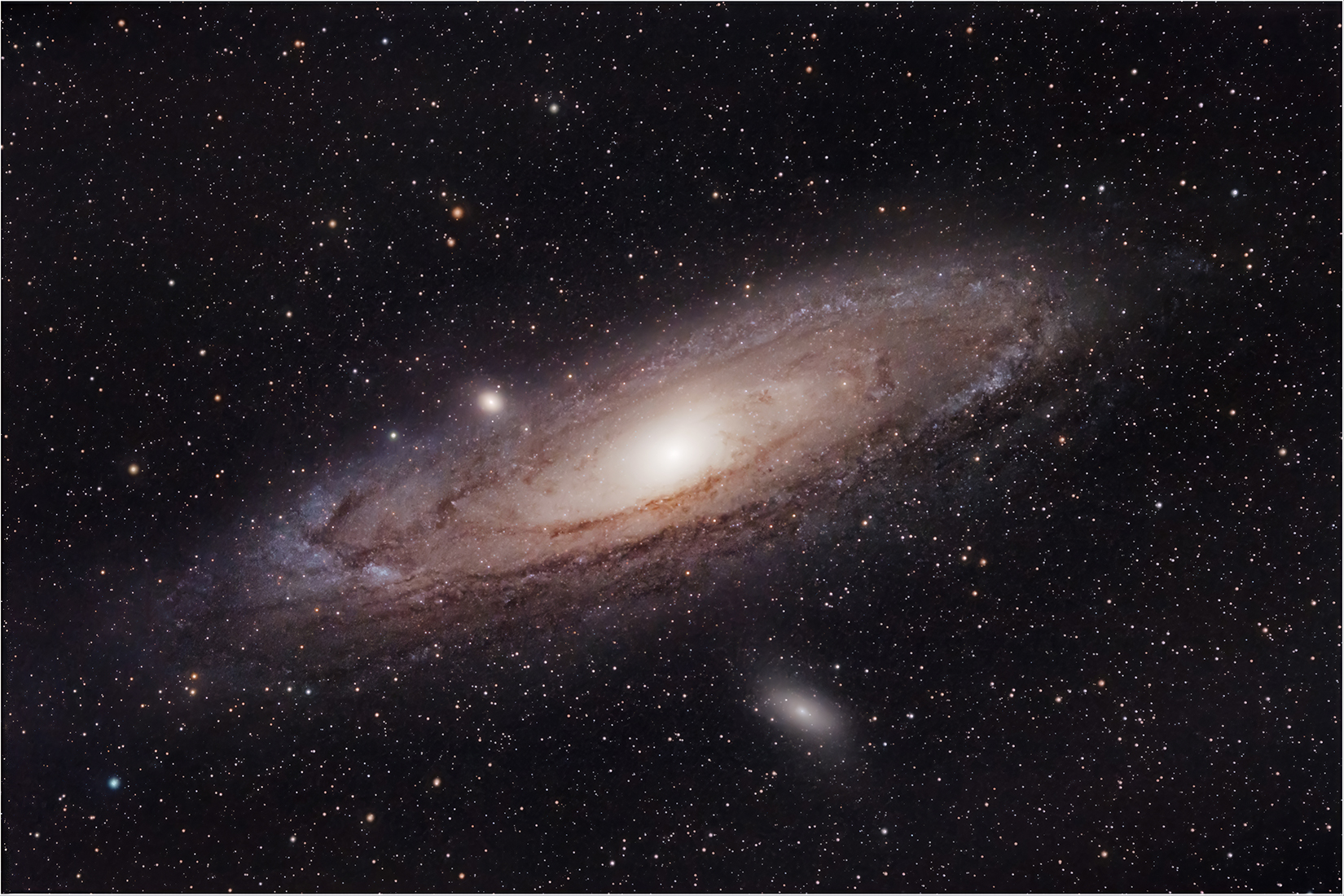The Andromeda Galaxy is the closest large galaxy to our own Milky Way, and is in many ways a sister to our own galaxy. Situated at a distance of 2.5 million light years in the constellation of Andromeda, it is visible to the naked eye under a dark sky, and is in fact the most distant object we can see. Only the central bright core is visible, and many people are surprised to learn that the galaxy is 5 times the size of the full moon. In common with a lot of astronomical objects, the reason they are difficult to see is not because they are so small, but because they are so dim. As our closest galactic neighbour, much has been learned about galaxies in general from the study of Andromeda and in fact it was the first galaxy to be recognised as lying outside our own Milky Way galaxy in 1925, when Edwin Hubble was able to measure its distance using a type of variable star known as Cepheid Variables. Until that date, many astronomers believed the spiral groupings of stars were a type of nebula within our galaxy, but once Andromeda was clearly placed outside our local galaxy, our awareness of the size of the universe expanded enormously.
The Andromeda Galaxy contains about 1 trillion stars and has a diameter of 220,000 light years. This makes it perhaps slightly larger than our own galaxy, though estimates are difficult to pin down exactly. What is known is that the two galaxies are on a collision course, and are expected to collide in about 4-5 billion years time. After that, it is likely the two galaxies will merge to form one super-galaxy. Andromeda also has numerous satellite galaxies, of which two can be seen in the above image – M32 immediately above the main galaxy and M110 below.
From the UK, Andromeda remains above the horizon throughout the year, but the best time to photograph it is late Autumn, from about October onwards into January. The image here was taken over a long session in January, and although the galaxy was high in the sky at the start of the session, by the end of the night it was sinking low in the sky, meaning it is more affected by light pollution and unsteady air. In astro-photography it is always useful to have as much exposure time as possible, but when the target sinks into heavy light pollution, the effectiveness of each individual sub-exposure is reduced.
Image Details
- Date: 6th Jan 2021
- Exposure Details: 43 x 500s, F6, ISO400
- Total Integration Time: 5hr 58min
- Camera: Canon EOS80D (unmodified)
- Telescope: Altair Astro 72EDF at 432mm focal length.
- Mount: Skywatcher HEQ5
- Guide Scope: Altair Astro 60mm
- Guide Camera: QHY5LII

